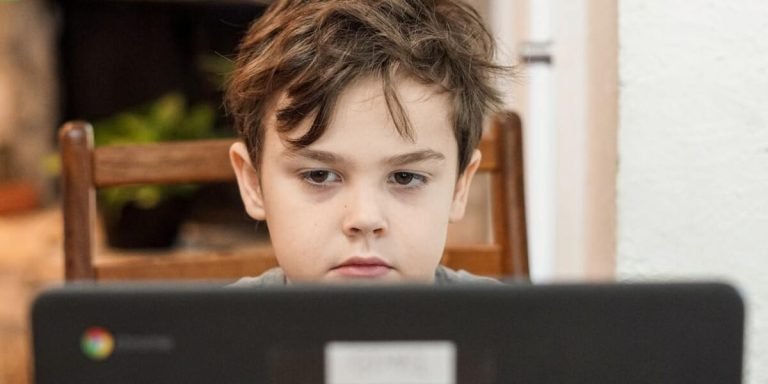Slow Learning Disability: Understanding and Navigating the Educational Journey
A “slow learning disability” can be an incredibly complex, yet fundamental obstacle for children in their educational journey. This invisible hindrance affects a significant percentage of school-age kids around the world dramatically impacting both their academic achievements and self-esteem. Understanding it is crucial for parents and educators alike to help these youngsters navigate effectively through this seemingly daunting maze.
This blog post aims to shine light on slow learning disabilities while providing valuable resources and strategies that support special education needs. With deep insights into how such disabilities work, coupled with the right tools tailored specifically towards boosting development, we seek to make every child’s educational venture fruitful despite any challenges they may face along the way.
Did you know?
Contrary to popular perception, students with slow learning disabilities often possess average or above-average intelligence levels. They simply process information at a slower pace compared to their peers.
Understanding Slow Learning Disability: Diagnosis and Characteristics
Slow Learning Disability, manifesting as a slower pace in grasping essential academic skills, is no longer an ambiguous hurdle in the landscape of child education. With advanced technological tools and resources now available for special education support, diagnosing this learning nuance has become more sophisticated and insightful.
In 2023 the diagnostic process involves comprehensive cognition profiling using AI systems that are designed to identify specific areas where children exhibit delayed progress compared to peers. Traits often linked with slow learner diagnosis include difficulty concentrating or remembering new information plus struggling substantially with complex tasks beyond their age level.
Technology integration offers dynamic solutions making it easier for educators and parents alike to tackle these characteristics head-on. Intelligent educational software lends detailed insights into individual student’s learning patterns helping tailor teaching approaches accordingly.
On-demand online platforms bridge gaps by providing access to resource-rich environments full of engaging multi-media content specifically addressing needs of those diagnosed with Slow Learning Disabilities ‘SLD’. These immersive experiences not only enhance cognitive abilities but also act as confidence builders increasing emotional resilience – a crucial aspect while navigating through SLD journey.
Recognizing the Signs of Slow Learning Disabilities in Children
Slow learning disability in children can sometimes be difficult to discern. It’s necessary for parents and educators alike to comprehend the signs associated with this condition, as early detection is vital. While these challenges may seem daunting at first, rest assured that with today’s advances in educational technology integration and special education resources, support exists.
First, understand that slow learners usually possess an average intelligence quotient but often require more time or different instructional methods than their peers. Now, let’s explore the common signs of a slow learning disability:
1) Academic Delays: A child consistently struggling academically could indicate a possible slow learning issue. They might take longer than usual to grasp basic concepts related especially towards numeracy or literacy skills.
2) Issues With Memory Retention: If they forget what has been taught swiftly even after repetitive teaching sessions – this could signal sluggish cognitive tempo.
3) Difficulty Following Instructions: Slow learners often have trouble following multi-step instructions due partly because they find difficulty processing information at the same speed as others.
4) Social Immaturity: For some kids dealing with such disabilities, peer interactions prove challenging–they might appear socially immature when compared against age-group counterparts’ accepted norms.
The Importance of Accurate Diagnosis for Tailored Support
Identifying a slow learning disability in children early on is imperative. It allows educators and parents to implement the right strategies, ensuring every child reaches their full potential. Thus, an accurate diagnosis holds immense true value for providing tailored support.
As we deepen our understanding of learning disabilities all over the globe, it has become evident that each case can be unique based on severity or specific characteristics present within different individuals. One child’s experience with a slow learning disability may differ vastly from another’s – even when they share similar diagnoses. Therefore, obtaining an accurate diagnosis isn’t just beneficial—it’s necessary.
Strategies and Tools for Supporting Students with Slow Learning Disabilities
In the sphere of special education, teachers and parents often grapple with finding effective strategies to support students diagnosed with slow learning disabilities. This challenge becomes less daunting when we effectively integrate technology in our educational processes. In this digital age, a wealth of resources are available that can significantly revolutionize how these unique learners grasp new concepts.
One such strategy involves using adaptive learning software tailored for children dealing with learning disabilities. These programs capitalize on interactive activities which could be reading exercises or mathematical problems solved at individual paces—all designed to cater to their distinct needs amidst an engaging environment filled with stimulating visuals and sounds.
Another great tool is virtual reality (VR). Immersive experiences offered by VR enable novice learners grappling with comprehension issues embark on journeys through historical eras or delve into molecular structures— things they’d typically find challenging presented via conventional teaching methods.
Such immersive tech-based educational aids not only facilitate understanding but also instill a sense of independence among students as it allows them learn at their pace without any undue pressure.
Implementing Individualized Education Programs (IEPs)
The Individualized Education Program or IEP, specifically designed for each student with a slow learning disability, is an exceptional approach to fuse technology integration and special education resources. As we advance into 2023, this strategy proves highly functional in supporting learners facing our focus challenge – the slow learning disability.
Creating an effective IEP requires understanding of the individual child’s strengths and weaknesses. It delves deep into assessing abilities instead of disabilities alone as it aims to provide exceptional guidance beyond academics that helps children grow socially and emotionally too.
Implementing these programs can have five significant phases:
1) Assessment: Initially, conduct comprehensive evaluations on students’ cognitive capabilities using advanced technological tools like digital assessments which accurately gauge children’s skill levels.
2) Planning: Develop tailored strategies suiting every learner’s needs where educational software comes handy delivering personalized teaching modules including gaming principles making lessons interactive yet fun-filled.
4) Review & Revision: Regularly review progress reports generated by tech-integrated platforms allowing timely recognization of weak areas needing extra attention and consequent modifications in training schedule if necessary.
5) Parental Involvement : Advocate parent involvement via online portals displaying kids’ performance updates fostering enhanced engagement between parents-children-teachers trinity leading towards better outcomes ultimately benefiting young minds affected with a slow learning disorder.
Effective Instructional Methods Specifically Designed for Slow Learners
In today’s world, technology is playing a crucial role in supporting special education. For children with slow learning disabilities, specially curated instructional methods can be beneficial in their holistic growth and development.
An effective approach to teach students with slow learning disability is through differentiated instruction. In this method of teaching, lessons are tailored according to the different academic levels within one classroom using flexible groupings and individual goals for each student. Technological tools like adaptive learning software or virtual reality-based educational programs could be integrated into these instructions delivering personalized content that caters specifically to a child’s need.
Moreover, project-based learning interactions provide hands-on practical knowledge which aids comprehension among students with slower cognitive processing speeds. Incorporating digital platforms where they can control variables directly impacting outcomes offers real-time experience fostering deeper understanding of concepts while keeping them engaged.
Another powerful tool that fits perfectly in this scenario would be game-based Learning opportunities incorporated within the curriculum as well! Using computer games designed around specific topics has proven successful at increasing motivation among such learners due to their interactive nature boosting retention rates significantly over time!
Collaborative Efforts to Enhance Special Education Resources
Educating a child with slow learning disabilities can pose significant challenges. The current educational infrastructure in most places is still evolving to adapt effectively and inclusively for students who learn at different paces. However, promising strides are being made towards this in 2023 – thanks primarily due to the integration of technology into education practices.
Technology has come to act as an enabler, fostering collaborative efforts among parents, educators and therapists aimed at enhancing special education resources. These technologies provide platforms where all stakeholders involved can work together seamlessly – teachers sharing successful teaching methodologies; parents exchanging experiences or concerns; professionals suggesting strategies based on updated research findings.
Moreover, assistive technology tools designed specifically for children with slow-learning disability have revolutionized the way these kids interact with their lessons. Interactive apps stimulate engagement by using pictorial illustrations or rewarding mini-games upon task completion which encourages sustained interest in learning activities.
Admittedly ,there’s ample room for growth but we now finally see palpable progress toward creating inclusive classrooms that cater equally well to every student’s individual needs.
Fostering Parent-Teacher Partnerships for Consistent Support
Fostering meaningful parent-teacher partnerships is crucial for amplifying the effectiveness of special education resources, especially for children with a slow learning disability. The collective efforts of both parents and educators can create an environment that offers consistent support tailored to individual learning needs.
A synergy between home and school produces the best results in managing slow-learning disabilities. By maintaining open lines of communication about a child’s progress at school, teachers can help guide parents on how they might reinforce this development at home too.
Parents play an instrumental role in providing insights into their child’s interests and abilities which are not visible in constrained classroom settings. These observations can be invaluable to tailor teaching methods or introduce appropriate technological aids aimed at bridging any existing gaps within traditional pedagogical means adopted by schools.
Consistency matters when dealing with a slow-learning disability because familiar procedures offer stability; unanticipated changes often trigger stress among these learners hampering educational progression altogether!
Utilizing Community and Online Resources to Supplement Learning
In a bid to enhance special education resources, collaborative efforts involving the use of community and online platforms become integral. Particularly for children with slow learning disability, these tools provide an inclusive and supportive environment where they can thrive.
Significantly harnessing these resources enables us to bridge gaps in traditional learning systems by meeting specific needs tailored for students with slow-learning disabilities. For that reason, let’s explore avenues through which we can effectively utilize both community-enhanced sessions as well as online platforms.
Firstly, local communities have always been resourceful entities when it comes to providing support during trying times such as this one—a child having challenges due their slow learning pace compared to others. These could be neighborhood groups or even school-based committees ready lend a helping hand either physically or emotionally thereby fostering self-esteem in the child while offering parents much needed respite from overall caregiving responsibilities.
Equally important are extracurricular activities offered within communities—Arts programs for instance—that target improving cognitive skills amongst kids experiencing difficulties at conventional classrooms settings; thus accelerating their mental growth rate significantly over time.
Conclusion
In conclusion, dealing with slow learning disability may initially appear daunting. But as we’ve explored throughout our discussion, understanding the unique needs and abilities of a child is the key to unlocking their potential. Remember that no two children are identical – patience and dedication in providing tailored educational approaches will lead them into a future full of possibilities.
The journey might be challenging but it’s far from impossible. Consider browsing around our website for more resources on educating your little one effectively or to find support from other parents and educators who have navigated similar paths before you. Because when it comes to fostering an inclusive, nurturing environment for your kids – remember you’re not alone; together we can make this world better tooled up educationally!







